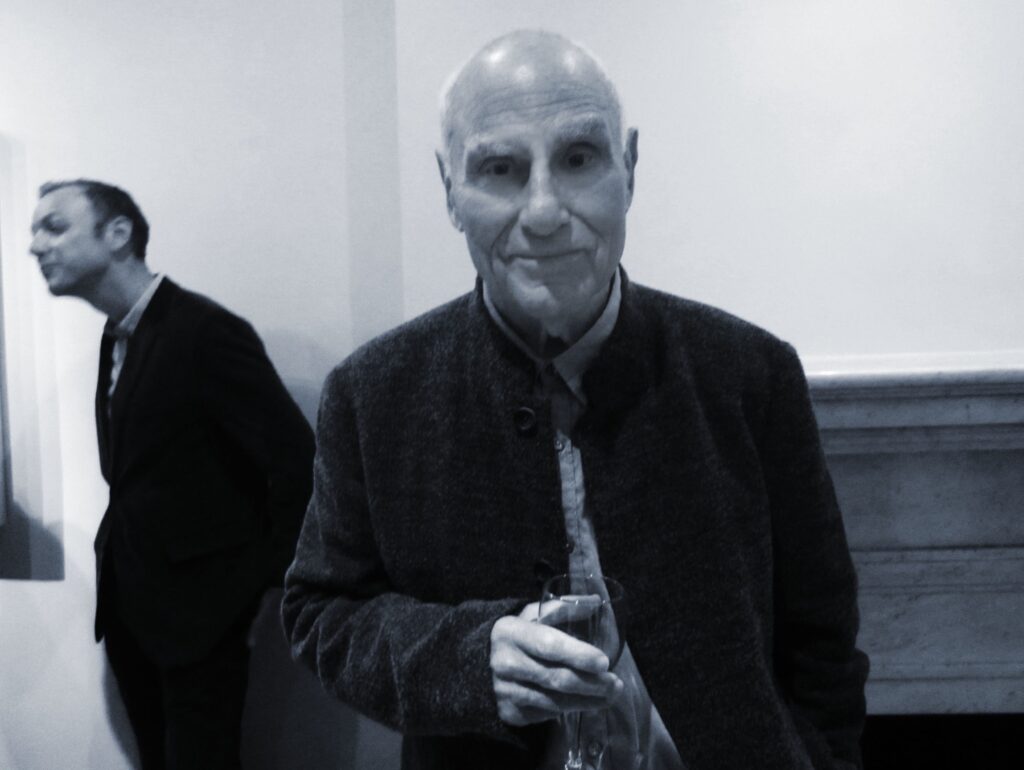Monumental Work by Richard Serra, the Poet Laureate of Brutalism, Commands the Space at Zwirner
Richard Serra is a challenging sculptor, but he is also one that cannot be ignored.

‘Richard Serra: Every Which Way’
David Zwirner Gallery, 537 West 20th Street, New York, NY
November 7, 2024 to December 7, 2024
As a child, I was beguiled by the concept of ideal Platonic forms: Geometric solids so perfect they could only be conceived of in the mind. Try to materialize them in our imperfect world, though, and they lose all their luster. Little did I know this concept was the same that set fire to the minds of the minimalists of the 1960s and 1970s.
They were artists intent on manifesting ideal form in a manner so achingly pure it would raise the simplest cube to the level of the sublime. Such was the vision of minimalist sculptural titan Richard Serra, whose installation “Any Which Way” currently occupies David Zwirner’s West 20th Street location.
Known for brawny, almost aggressively large geometric forms made from steel, Serra built a 50-year career fabricating sculptures as daunting as they are irresistible. His approach weds exquisitely pared down geometry with the heavy, often roughly patinaed surfaces of his material. You could call him the poet laureate of brutalism.
The scale of Serra’s installation at Zwirner, originally shown in 2015, doesn’t disappoint. It consists of 16 rectangles of weatherproof steel, six feet wide and seven to eleven feet high and a foot thick. They command the current space at Zwirner with their monolithic presence.
Despite this monumentality, it also savvily addresses the negative space surrounding it. Each slab’s position and size is precisely considered, as is the movement of the viewer around them. Serra’s sculpture is all about the way we relate to form, and the acute bodily self-consciousness that comes with it. You are made to think about how you occupy space.
Entering this forest of imposing slabs you are also compelled to move, switching to a felt sense of being a small body among larger bodies. You can wander among the massed forms and experience them in this way, at an almost primitive, Ur level of proprioception.
Serra himself spoke of the installation in more formalist terms. He mentions its “verticality,” and the way in which it suggests an urban setting. Oftentimes Serra’s pieces are so bluntly minimal architecture does not even come to mind. This particular piece, however, is an exception.
As he said in conversation with Hal Foster, “‘Every Which Way’ has more of an architectural reference than prior pieces.… It’s always there, not here. Even when you’re right up against it, it always evades you.… Like being in the midst of a city, ‘Every Which Way’ forces you to make counter steps, twists, and turns continuously.” The important thing, ultimately, is that you are compelled to move through it.

When Serra graduated with his MFA from Yale in 1964 alongside fellow minimalists Robert Mangold and Brice Marden, he was at the vanguard of a new movement. What constitutes minimal, however, is largely up for interpretation. Serra’s approach, strongly influenced by his early work as both a steel laborer and pipe fitter, led him to pursue the extreme and rough-hewn density of steel as an essential aesthetic component of his work. It became his trademark.
However you might try to dismiss Serra for his willfulness if not bombastic materiality, he still reaches you. Serra hits you at a visceral level. He bypasses sculptures’ earlier reliance on the representational and the referential and hits you directly on the level of the physical. You feel him in your guts.
Yet Serra is also a master of reduction and refinement. There is not a whisper of excess in his massed forms, corralling the space around his shapes like an industrial Zen master. Serra’s gambit with this particular installation is in fact more elegant and urbane than it is forceful, though the towering plates do have an imposing presence.
This is because Serra’s work communicates largely through its heaviness. How heavy? As heavy as possible. Descriptions of Serra’s sculptures often come with almost boastful adages about their tonnage. It seems excessive but it is also necessary. Without their ponderous density and weight, the pared down simplicity of his forms would lose their edge.
Not that this imposition always works. Serra famously created “Tilted Arc,” a crescent of rusted steel 127 feet long and 12 feet tall in the Javits Federal building plaza at Lower Manhattan. On the level of pure aesthetics, it was sublime, but it was also wrong for a public square.
It divided the space while creating an unforeseen hideout for vagrants and addicts. Subject to great ridicule and much ballyhooing, it was finally destroyed. Unfortunately, it has drawn attention away from many of Serra’s successful public projects scattered across the globe.
All to say that aesthetics, especially minimalist aesthetics on an industrial scale, are a matter of continuous tinkering with negative space. In a gallery such a space is a given, and Serra works within it exquisitely. His solemn subdivision of space and the massed impositions of his forms all seem congruent here. His vision tracks.
Serra is a challenging sculptor, but he is also one that cannot be ignored. He is one of the true masters of the form we’ve had over the last five decades. This current show, showcasing his robust interrogation of form at its most essential, is irrefutable proof.

